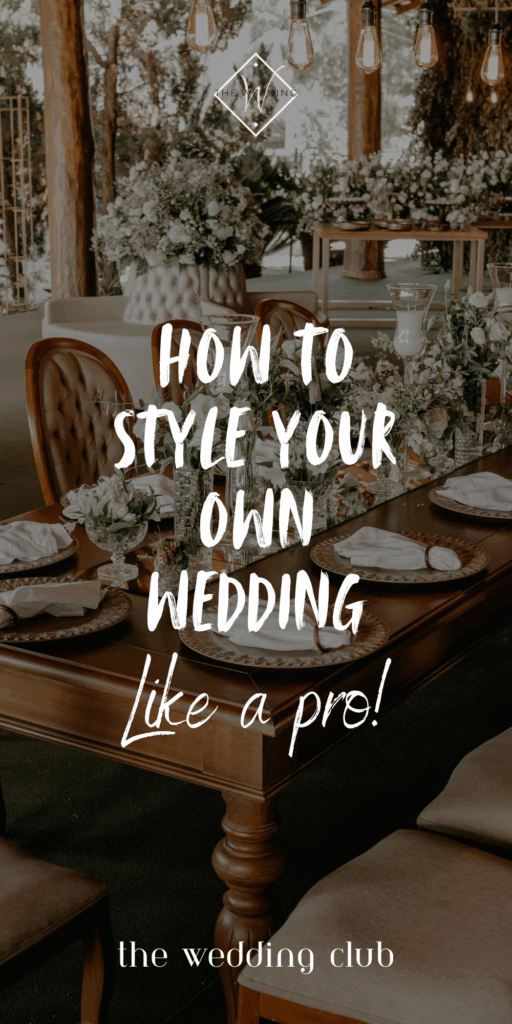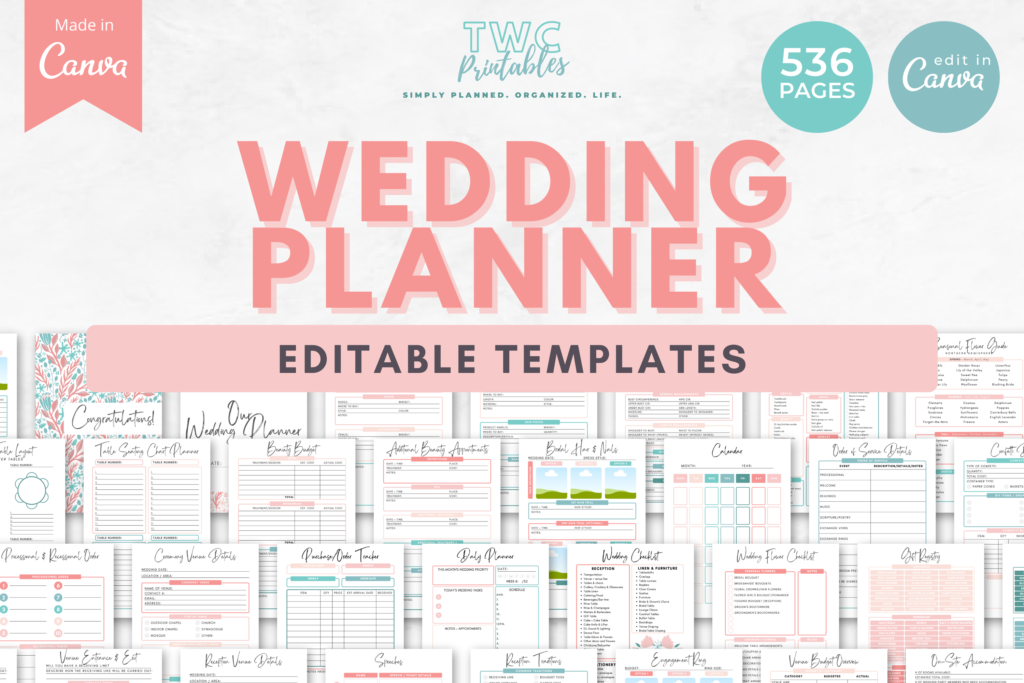You’ve said “yes” and the planning has begun — but how do you make sure your wedding looks and feels exactly the way you imagine? This is where wedding styling comes in.
Unlike logistics and timelines, styling is about the visual story of your day: the colors, décor, flowers, and subtle details that create atmosphere and make your wedding memorable.
The truth is, styling your own wedding can feel overwhelming at first — with endless Pinterest boards, color palettes, and theme ideas competing for your attention. But here’s the good news: once you understand the core elements of styling, you can pull it all together with confidence.
This guide breaks down the entire process step-by-step: from choosing your colors and theme to selecting décor and flowers like a pro. By the end, you’ll have a clear roadmap for creating a cohesive, stylish, and unforgettable wedding.
Quick Wedding Styling Checklist
💡 If you’re short on time, here’s the fast version:
-
Define your vision: Decide on the overall vibe (romantic, rustic, modern, boho, classic).
-
Pick a color palette: 2–3 main shades + 1–2 accents that set the mood.
-
Choose a theme (subtle is best): Add personality without going overboard.
-
Select décor wisely: Keep it cohesive, scaled correctly, and budget-friendly.
-
Incorporate flowers: Use in-season blooms, greenery fillers, and large florals for impact.
-
Tie it all together: Ensure ceremony + reception styling feels connected.
-
Avoid common mistakes: Too many colors, clashing styles, or overpowering décor.
Planning a Wedding?
Save time and effort by grabbing our Wedding Planner Bundle! With over 500+ pages to choose from + edit, we made sure to not leave anything out, giving you peace of mind!
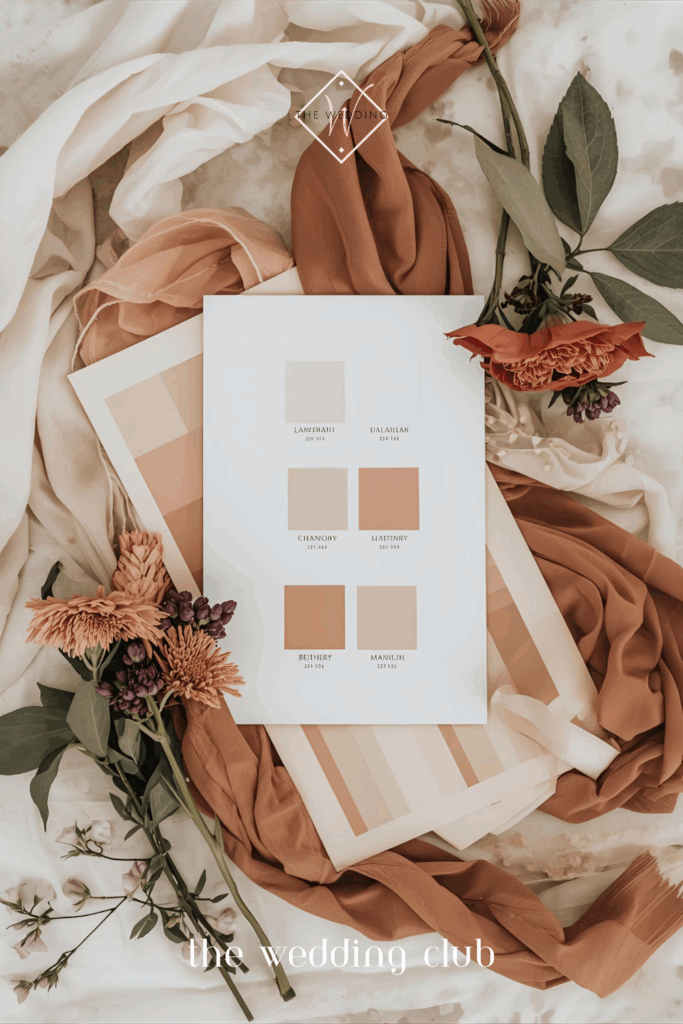
What Is Wedding Styling (and Why Does It Matter)?
When most people think about wedding planning, they picture guest lists, budgets, and vendor bookings. But wedding styling is a different (and equally important) piece of the puzzle. It’s the art of creating a cohesive look and feel for your big day — the details that make your wedding uniquely yours.
Wedding styling includes:
-
Choosing your color palette
-
Defining your theme or vibe (romantic, rustic, boho, modern, classic)
-
Selecting décor elements like centerpieces, lighting, and signage
-
Incorporating flowers and greenery to tie it all together
In short, if wedding planning is about logistics, styling is about the visual story — how your day looks, feels, and flows from the ceremony to the reception.
Why Styling Matters
A well-styled wedding makes a huge difference:
-
Creates atmosphere → colors and décor set the tone, whether that’s dreamy romance or modern elegance.
-
Tells your story → subtle styling choices reflect your personality as a couple.
-
Avoids clashes → cohesive styling prevents random décor or colors from competing.
-
Elevates the experience → your guests will notice when everything feels polished and intentional.
💡 Pro Tip: Think of wedding styling as your “brand” for the day. Just like a logo, fonts, and colors unify a business, your palette, décor, and flowers unify your wedding into one seamless experience.
Step 1 — Define Your Wedding Vision
When most people think about wedding planning, they picture guest lists, budgets, and vendor bookings. But wedding styling is a different (and equally important) piece of the puzzle. It’s the art of creating a cohesive look and feel for your big day — the details that make your wedding uniquely yours.
Start with Your Shared Preferences
Your wedding is a reflection of both you and your partner, so begin with what you love most as a couple. Think about:
-
Favorite colors and tones
-
Styles of venues you’re drawn to (garden, beach, ballroom, industrial loft)
-
Activities or interests you share (travel, music, books, food)
💡 Pro Tip: Write down 3–5 words that describe how you want your wedding to feel (e.g., “romantic, intimate, timeless” or “fun, bold, unforgettable”). These words will help you stay focused when making styling decisions.
Turn It into a Moodboard (Without Overwhelm)
Moodboards are a professional stylist’s secret weapon. They allow you to visualize how colors, décor, and themes work together before you commit. But here’s the catch — don’t get lost in an endless scroll.
-
Use Pinterest intentionally: search for specific terms like “romantic wedding table settings” instead of broad “wedding inspiration.”
-
Try Canva or Milanote to create a clean digital moodboard.
-
Limit yourself to 15–20 strong images that truly reflect your style.
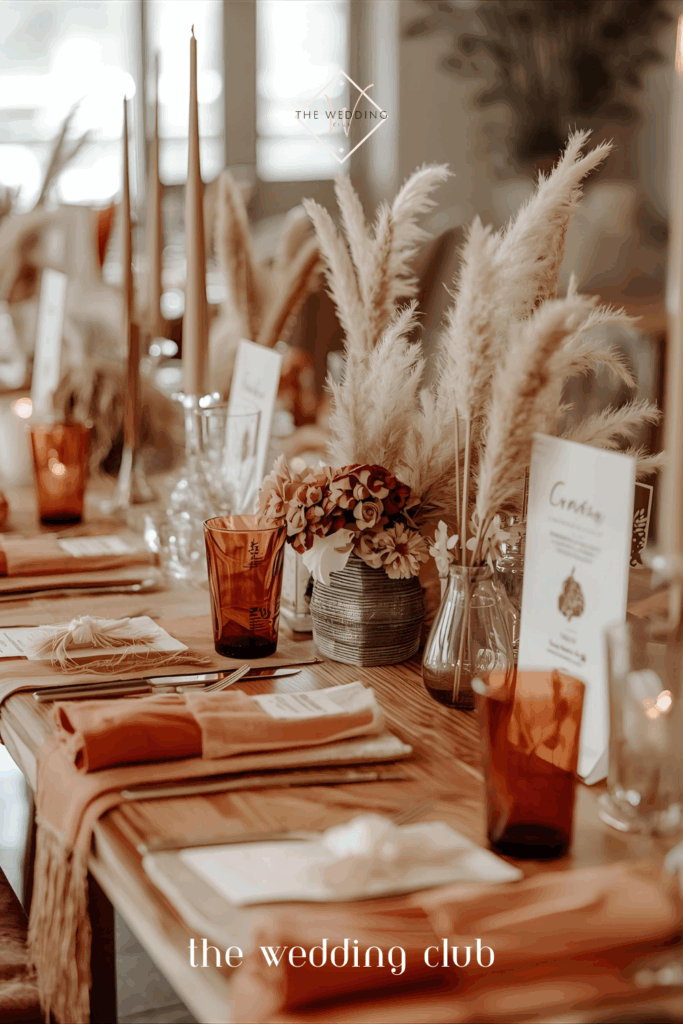
Choose a Vibe, Not a Gimmick
One of the most common styling mistakes couples make is choosing a theme that feels more like a costume party than a wedding. Instead of going literal (e.g., a “Disney” or “Las Vegas” theme), focus on the vibe you want to create:
-
Romantic garden → soft pastels, candlelight, floral arches
-
Modern minimalist → sleek lines, monochrome palette, geometric décor
-
Rustic chic → wooden tables, wildflowers, fairy lights
-
Boho luxe → macramé, warm neutrals, pampas grass, rugs
💡 Pro Tip: Subtle nods to your favorite interests or stories are beautiful. Instead of recreating a movie theme, include one symbolic detail (like a single red rose for Beauty & the Beast).
Defining your wedding vision early ensures every styling choice feels intentional. By focusing on shared preferences, a clear moodboard, and a cohesive vibe, you’ll avoid clashing styles and create a day that truly feels like you.
Step 2 — Styling Your Wedding with Color
Color is the backbone of your wedding style. It sets the tone, mood, and energy of your day, and influences everything from flowers and décor to attire and stationery. Choosing the right palette will ensure your wedding looks cohesive, polished, and intentional.
Why Colors Matter in Wedding Styling
Colors do more than look pretty — they create an atmosphere:
-
Pastels (blush, sage, lavender) → soft, romantic, whimsical
-
Neutrals (ivory, beige, taupe, gray) → timeless, elegant, versatile
-
Jewel tones (emerald, ruby, sapphire) → bold, dramatic, luxurious
-
Earth tones (terracotta, olive, rust) → rustic, natural, grounded
💡 Pro Tip: Stick to 2–3 main colors plus 1–2 accent shades. Too many colors can make your wedding feel scattered rather than stylish.
How to Pick a Color Palette
When choosing your wedding colors, consider:
-
Season → pastels for spring, bold tones for fall, icy shades for winter.
-
Venue → a historic ballroom calls for different tones than a beachside ceremony.
-
Personal style → do you prefer romantic, modern, rustic, or boho looks?
-
Practicality → pick shades available in flowers, fabrics, and décor rentals.
💡 Pro Tip: Start with your bridesmaids’ dresses or floral options — these often set the stage for your entire palette.
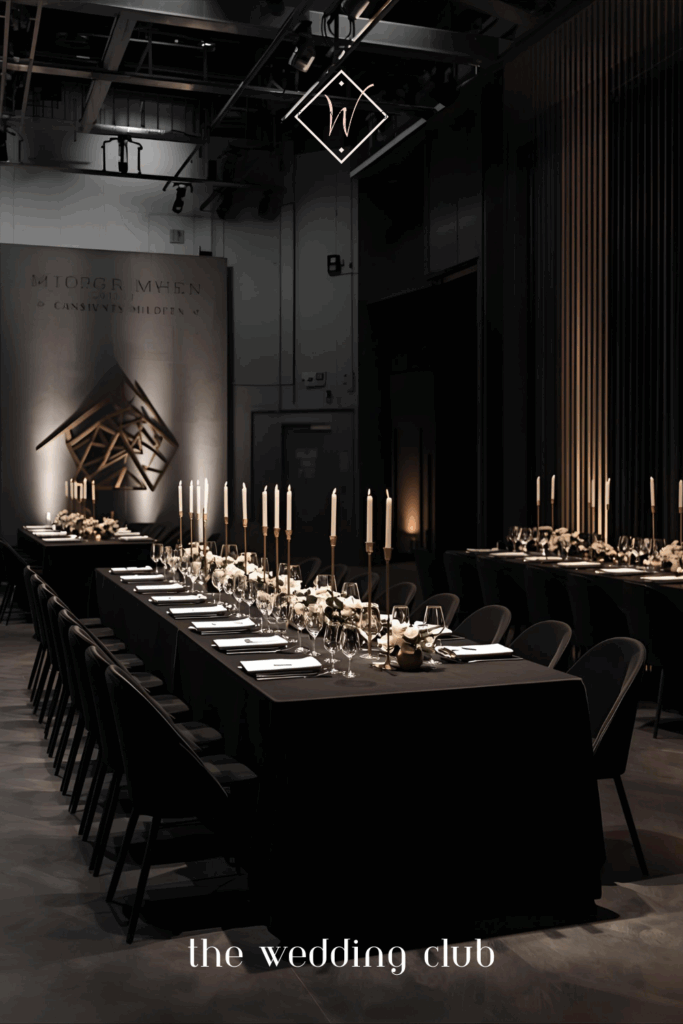
Color Theory Basics for Weddings
Designers often rely on color theory to balance tones. Here’s how to apply it to your wedding:
-
Complementary colors → opposite on the color wheel (e.g., navy + blush). Creates bold contrast.
-
Analogous colors → next to each other on the wheel (e.g., sage + olive + ivory). Feels harmonious.
-
Monochrome palette → variations of the same color (e.g., dusty rose + blush + mauve). Looks modern and sleek.
💡 Pro Tip: If you love bold shades, balance them with neutrals so they don’t overpower the entire design.
Trending Wedding Color Palettes
While timeless shades never go out of style, here are some trending combinations couples are loving this year:
-
Modern Romance → blush pink, champagne, dusty rose
-
Earthy Luxe → terracotta, sage, ivory, gold accents
-
Bold Elegance → emerald green, black, ivory, gold
-
Soft & Whimsical → lavender, sky blue, butter yellow
-
Timeless Neutrals → ivory, beige, taupe, soft gray
Your wedding colors will guide every styling decision you make. Choose a palette that reflects your personality, season, and venue, and stick to a limited number of shades for maximum cohesion.
Step 3 — Incorporating a Theme (The Right Way)
A wedding theme is a powerful tool to tie everything together, but it’s also where many couples go wrong. Done well, a theme creates cohesion and adds personality. Done poorly, it can make your wedding feel more like a costume party than a celebration of love.
Avoid Literal, Overdone Themes
Literal themes — like Disney weddings, Las Vegas showgirls, or decade-specific parties — often date quickly and distract from the romance of the day. They can feel forced and may not age well in photos.
💡 Pro Tip: A theme should guide your styling choices, not dominate them. Think “inspiration,” not “imitation.”
Focus on the Vibe, Not a Gimmick
Instead of copying a literal theme, think about the atmosphere you want to create:
-
Romantic Garden → lush flowers, candles, pastel tones
-
Modern Minimalist → clean lines, monochrome palettes, geometric details
-
Rustic Chic → wooden tables, fairy lights, wildflowers
-
Boho Luxe → earthy textures, warm neutrals, pampas grass, draped fabrics
These vibes give you flexibility to personalize while keeping things cohesive.
Subtle Touches That Work Beautifully
If you want to include a favorite character, story, or interest, do it through small details:
-
A single red rose in a glass cloche for Beauty and the Beast.
-
Vintage map escort cards for travel lovers.
-
Subtle gold stars in stationery for astronomy enthusiasts.
These details make your wedding meaningful without overwhelming the overall look.
Themes should enhance your wedding, not overshadow it. By focusing on vibes instead of literal gimmicks, and adding subtle nods to your interests, you’ll create a wedding style that feels timeless, elegant, and deeply personal.
Step 4 — Choosing Wedding Décor Wisely
Décor is where your wedding vision truly comes to life — but it’s also where budgets can spiral out of control. To style your wedding like a pro, approach décor with strategy: focus on cohesion, scale, and practicality.
Start with What the Venue Provides
Before you rent or buy décor, check what your venue already includes. Many venues offer chairs, linens, or basic centerpieces as part of their package. This can save you hundreds (or even thousands) of dollars.
💡 Pro Tip: Ask your venue for an inventory list before you book external rentals.
Stick to Cohesion (and Avoid Shiny Object Syndrome)
It’s easy to fall in love with every pretty piece you see online, but mixing too many styles can make your wedding look cluttered. Always ask: “Does this piece fit with my color palette and theme?”
-
Limit metallics (gold, silver, copper) to one or two finishes.
-
Match décor pieces to your overall vibe (e.g., rustic wood for boho vs. sleek glass for modern).
-
Don’t overfill your tables — negative space is elegant.
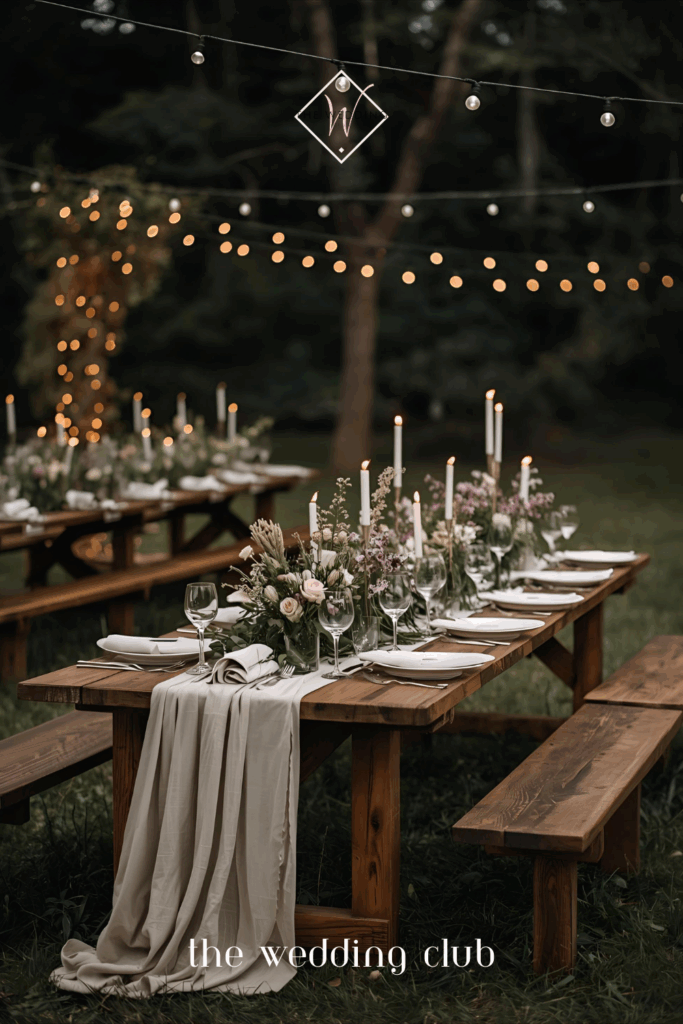
Get the Scale Right
Pro stylists know that size and proportion matter just as much as beauty.
-
Centerpieces: Use odd numbers (groups of 3 or 5) for balance.
-
Heights: Keep table décor either very tall (above eye level) or very short (below chin level) so guests can see each other.
-
Balance: Spread accent décor evenly across the room for flow.
Understand Metals & Materials
Not all metallics are created equal — and clashing them can break your styling.
-
Copper → warm orange undertone
-
Bronze → deeper brown undertone
-
Rose Gold → pinkish tint, closer to copper than gold
💡 Pro Tip: Stick to one metallic family for a polished, professional look.
Choose Rental Companies Carefully
Not all vendors are equal. Before committing:
-
Compare at least 3 rental companies for pricing and availability.
-
Read online reviews (Google + social media).
-
Ask about delivery, setup, and pickup policies.
💡 Pro Tip: Prioritize reliable suppliers — a missing table or late delivery can derail your styling plan.
Wedding décor should enhance your vision, not overwhelm it. Start with what your venue provides, stick to a cohesive style, balance scale and proportion, and choose your rentals wisely. Small, intentional choices will make your wedding look polished and professional.
Planning a Wedding?
Save time and effort by grabbing our Wedding Planner Bundle! With over 500+ pages to choose from + edit, we made sure to not leave anything out, giving you peace of mind!
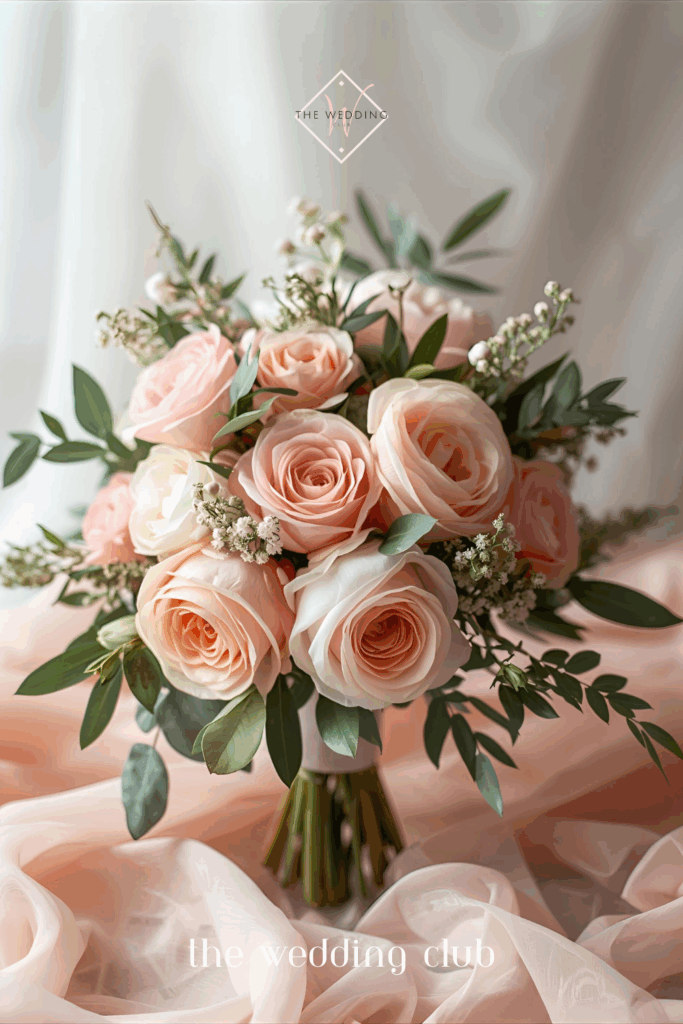
Step 5 — Bring It Together with Flowers
Flowers are often the highlight of a wedding style. They add color, texture, and romance, while tying your theme and décor together. But to style with flowers like a pro, you’ll need to balance aesthetics, availability, and budget.
Choose Rental Companies Carefully
Seasonality affects both price and availability.
-
In-season flowers are fresher, more vibrant, and cost-effective.
-
Out-of-season flowers are often imported, making them pricier and harder to source.
💡 Pro Tip: Ask your florist for seasonal substitutions — a similar bloom in your palette may cost half the price.
Play with Scale
Large flowers can make a big impact without needing many stems.
-
Hydrangeas, peonies, sunflowers → fill arrangements quickly.
-
Smaller blooms like spray roses or ranunculus → perfect for detail work in bouquets or boutonnieres.
💡 Pro Tip: Mix large focal flowers with smaller fillers to maximize impact while keeping costs down.
Use Greenery as a Styling Secret
Greenery isn’t just filler — it adds texture, freshness, and contrast. Popular choices include:
-
Eucalyptus (soft, romantic)
-
Ruscus (sleek, modern)
-
Ferns or ivy (lush, natural)
Greenery-heavy arrangements are trending, and they’re much friendlier on the budget than flower-only designs.
Match Flowers to Your Palette
Not every flower comes in every shade. If your exact color isn’t available, consider alternatives:
-
Can’t find blush roses? Try dahlias or ranunculus in a similar tone.
-
Want deep burgundy? Opt for scabiosa or anemones instead of out-of-season peonies.
💡 Pro Tip: Always test how your flowers look together in natural light before finalizing.
Think Beyond the Bouquet
Flowers aren’t just for bouquets and centerpieces. Incorporate them into:
-
Ceremony arches or backdrops
-
Aisle markers
-
Cake decorations
-
Hair accessories or boutonnieres
-
Table runners of greenery or single stems in bud vases
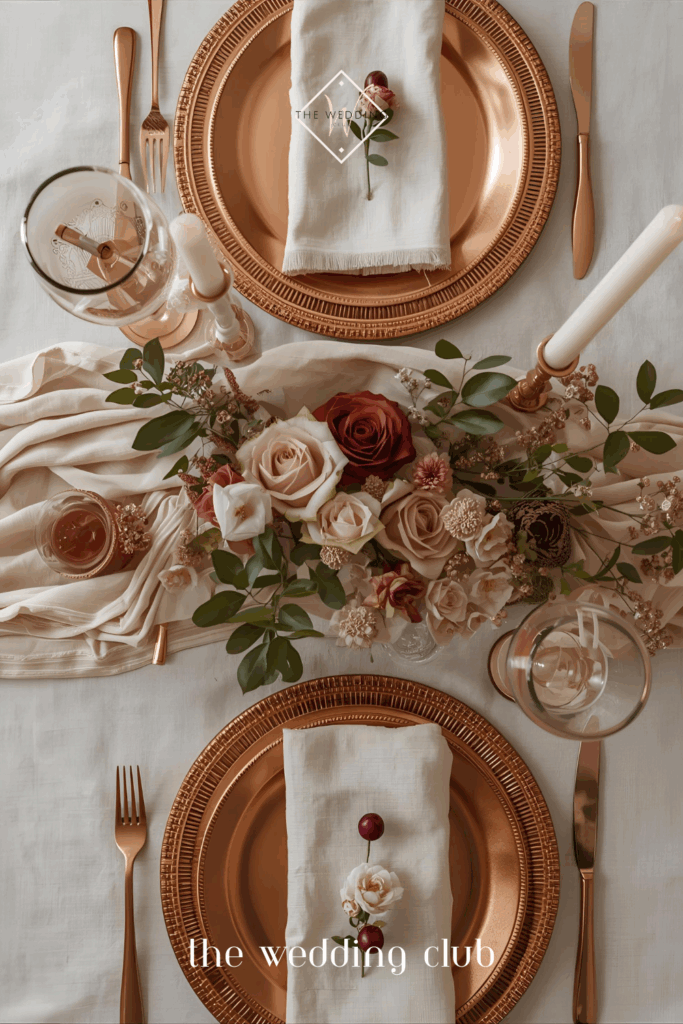
Flowers are the finishing touch that makes your wedding style feel complete. By choosing in-season blooms, mixing scales, adding greenery, and matching your palette, you’ll create stunning arrangements that look professional without breaking your budget.
Step 6 — Pulling It All Together Like a Pro
You’ve chosen your colors, hinted at a theme, selected décor, and picked your flowers — now it’s time to make sure everything feels like one seamless, intentional design. This step is where professionals shine, but with the right approach, you can do it too.
Think in Layers
Professional stylists don’t just add decorations randomly. They build layers:
-
Foundation: Venue, layout, and ceremony/reception flow.
-
Color palette: Main shades + accent tones repeated throughout.
-
Core elements: Décor, linens, furniture, lighting.
-
Details: Flowers, signage, stationery, small personal touches.
💡 Pro Tip: If one element feels “off” compared to the others, remove or adjust it until the look feels balanced.
Use a Moodboard as Your North Star
Revisit your moodboard before making final styling decisions. This helps prevent “shiny object syndrome” and ensures your colors, textures, and details align.
-
Ask: Does this fit the vibe we wanted from the start?
-
Keep your 3–5 original “vision words” in mind (e.g., romantic, modern, fun).
Maintain Cohesion Between Ceremony & Reception
Your wedding should flow from start to finish, not feel like two unrelated events. Achieve this by:
-
Repeating your color palette in both spaces.
-
Carrying through floral styles (bouquets matching centerpieces).
-
Using consistent signage and stationery design.
-
Matching lighting style (fairy lights, candles, or uplighting) across spaces.
Add Personal Touches
Small, thoughtful details elevate your wedding from styled to unforgettable. Consider:
-
Custom signage with meaningful quotes.
-
A signature cocktail that matches your color scheme.
-
Family heirlooms or cultural details woven into the décor.
Bringing your wedding style together is about balance, repetition, and intention. By layering your design, sticking to your moodboard, keeping ceremony and reception cohesive, and adding personal details, you’ll style your wedding like a true professional.
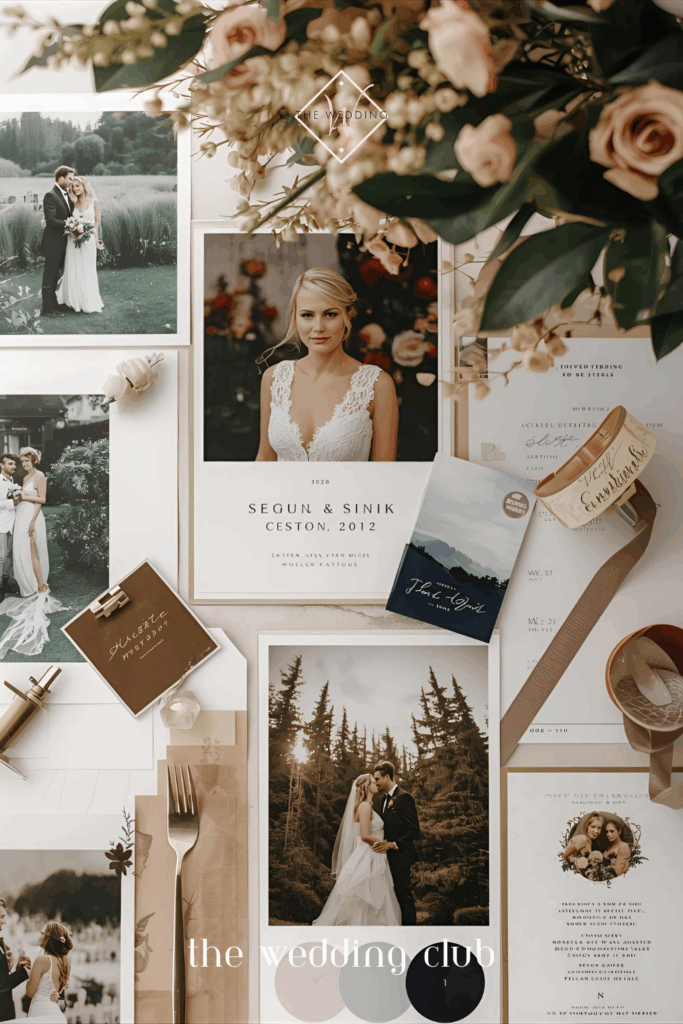
Common Wedding Styling Mistakes to Avoid
Even with the best intentions, it’s easy to make styling choices that clash, overwhelm, or stretch the budget. Here are the most common mistakes couples make — and how to avoid them.
Using Too Many Colors
A rainbow might sound fun, but in wedding styling it usually leads to chaos. Limit yourself to 2–3 main colors plus 1–2 accents. This creates cohesion and keeps your design polished.
Choosing a Literal or Overdone Theme
Turning your wedding into a full-on Disney, casino, or movie set can overshadow the romance of the day. Instead, focus on a vibe or subtle touches that nod to what you love.
Ignoring Scale and Proportion
Décor that’s too large can overwhelm the space, while too many small items make things feel cluttered.
-
Tables: Keep centerpieces tall (above eye level) or low (below chin level).
-
Room balance: Spread décor evenly, rather than crowding one area.
Forgetting Ceremony–Reception Cohesion
Your ceremony and reception should feel like part of the same story. Carry your color palette, floral choices, and signage style through both spaces.
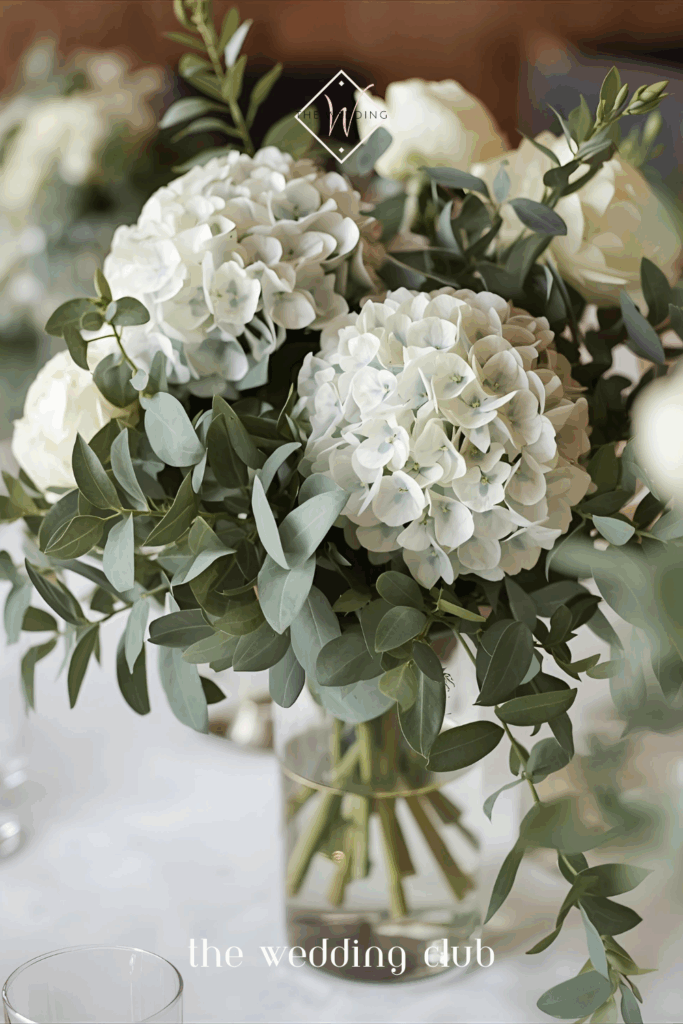
Not Considering Flower Seasonality
Falling in love with a flower that’s out of season can bust your budget fast. Always ask your florist for in-season alternatives that match your palette.
Overdecorating the Venue
It’s tempting to fill every corner with décor, but less is often more. Let your venue’s natural beauty shine and highlight just a few key areas (ceremony backdrop, reception tables, entryway).
Forgetting the Guest Experience
Décor isn’t just about looks — it should also be practical. Avoid cluttering tables with oversized arrangements or placing décor where it blocks movement and conversation.
💡 Avoid styling mistakes by sticking to a limited color palette, focusing on vibes instead of literal themes, balancing décor scale, considering seasonality, and remembering guest comfort. The goal is a wedding that feels cohesive, elegant, and enjoyable for everyone.
Planning a Wedding?
Save time and effort by grabbing our Wedding Planner Bundle! With over 500+ pages to choose from + edit, we made sure to not leave anything out, giving you peace of mind!
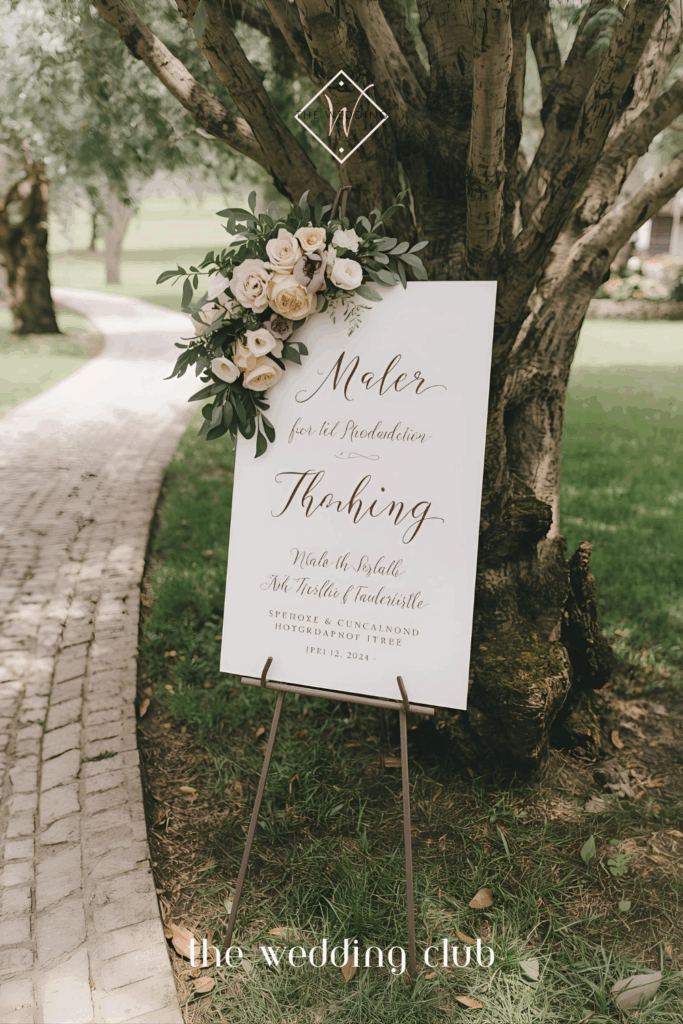
Frequently Asked Questions About Wedding Styling
What is wedding styling (and how is it different from planning)?
Wedding styling focuses on the visual story of your day—colors, theme, décor, flowers, and overall atmosphere. Wedding planning handles logistics—budgets, timelines, vendors, and contracts. In short: planning = operations, styling = aesthetics.
When should I start styling my wedding?
Begin styling right after you define your vision and budget—ideally 12–18 months out. Lock your color palette and vibe before booking major décor or floral items so every choice supports one cohesive look.
How many colors should a wedding palette have?
Use 2–3 main colors plus 1–2 accent shades. This creates harmony and avoids visual clutter. Balance bold tones with neutrals for a polished result.
How do I choose a wedding color palette that actually works?
- Match the palette to your venue (beach vs. ballroom vs. garden).
- Consider the season and natural light.
- Check flower availability in those shades.
- Test combinations on a moodboard before buying.
Theme vs. vibe—what’s the difference?
A theme can be literal (e.g., a specific movie), while a vibe is a mood (romantic garden, modern minimalist, rustic chic, boho luxe). Vibes age better, are easier to execute, and feel more timeless in photos.
Can I mix metals like gold, rose gold, and copper?
Yes—sparingly. Stick to one dominant metallic and use one supporting tone. Avoid mixing undertones that clash (e.g., cool chrome with warm copper) unless your palette intentionally balances them.
What are common wedding styling mistakes to avoid?
- Too many colors competing for attention.
- Literal, overdone themes that date quickly.
- Centerpieces that block guest sightlines.
- Ignoring flower seasonality and blowing the budget.
- Mismatch between ceremony and reception styling.
How do I keep the ceremony and reception cohesive?
- Repeat your color palette across both spaces.
- Echo floral choices and styling (bouquets ↔ centerpieces).
- Use consistent signage, stationery, and lighting style.
What height should centerpieces be?
Choose either very tall (above seated eye level) or very low (below chin level) so guests can converse comfortably. Vary heights across tables for visual interest while keeping sightlines clear.
How can I save money on wedding décor without losing style?
- Leverage venue-included items (linens, chairs, basics).
- Prioritize a few high-impact areas (entry, altar/arch, head table).
- Use greenery and larger blooms (e.g., hydrangeas) to fill space.
- Rent instead of buy when possible; compare at least 3 vendors.
Which wedding color palettes are trending this year?
- Modern Romance: blush, champagne, dusty rose
- Earthy Luxe: terracotta, sage, ivory, gold accents
- Bold Elegance: emerald, black, ivory, gold
- Soft & Whimsical: lavender, sky blue, butter yellow
- Timeless Neutrals: ivory, beige, taupe, soft gray
How do I use Pinterest without getting overwhelmed?
Search intentionally (e.g., “modern minimalist wedding table” vs. “wedding ideas”). Limit your moodboard to 15–20 images, and filter every save through your vision words and color palette.
Do I need a wedding stylist if I already have a planner?
Not always—many planners handle styling, but some focus on logistics only. If visual cohesion is a priority and you want pro-level aesthetics, hiring a stylist (or a planner who offers styling) can be worth it.
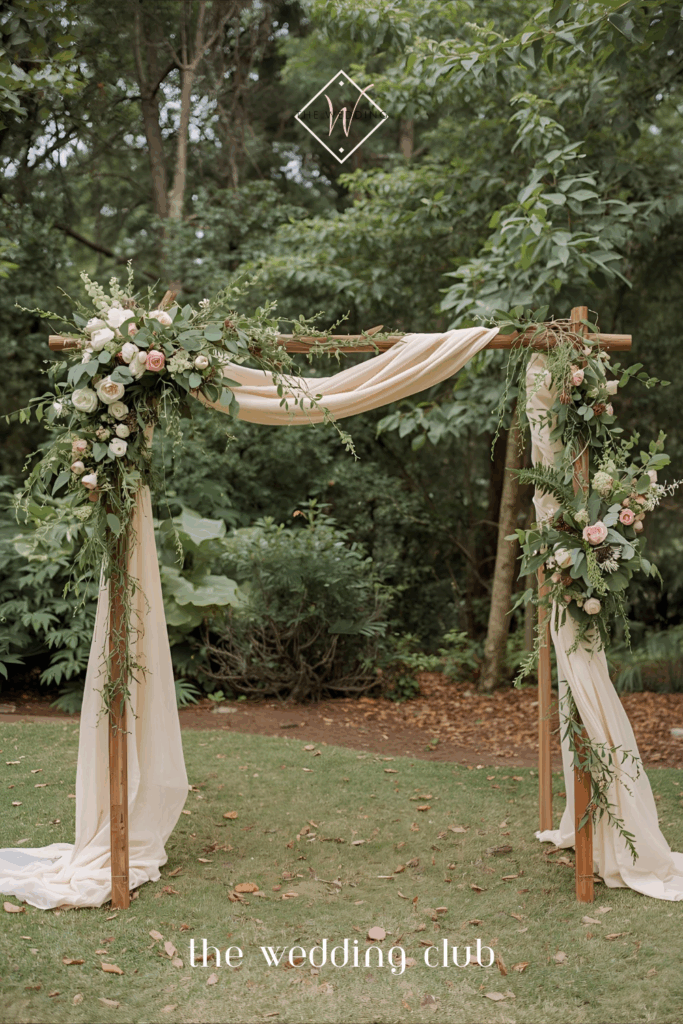

by Tanya Guilfoyle
Born in Johannesburg, South Africa, Tanya has been an active contributor and planner in the wedding industry since 2016. When not writing useful content for brides and wedding professionals, she can be found designing templates for her Etsy shop, TWCprintables.
Planning a Wedding?
Save time and effort by grabbing our Wedding Planner Bundle! With over 500+ pages to choose from + edit, we made sure to not leave anything out, giving you peace of mind!

